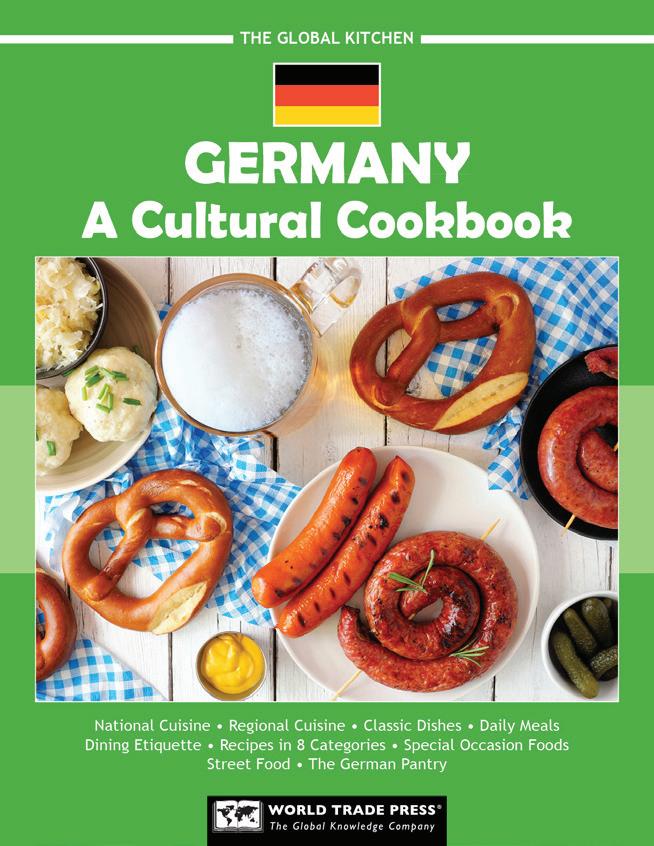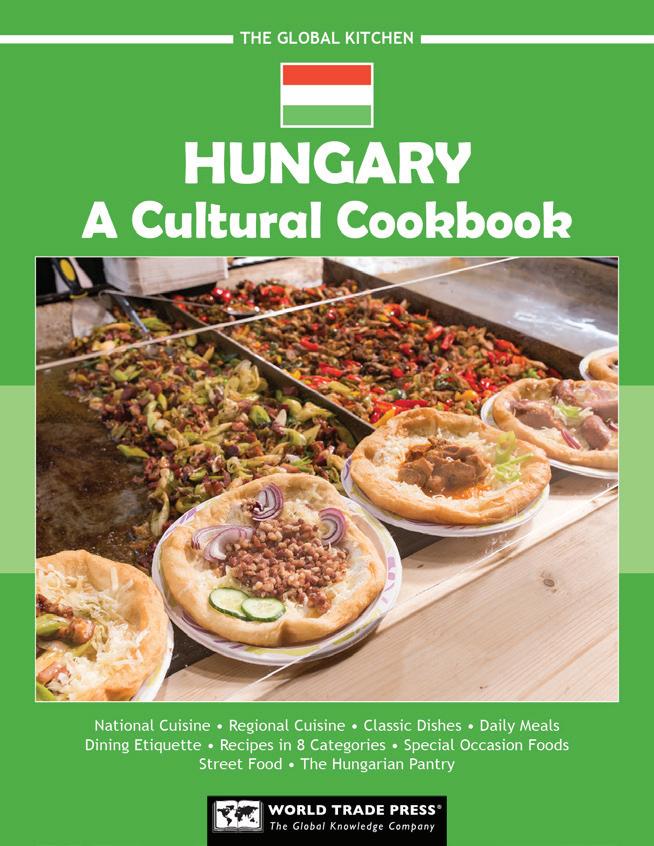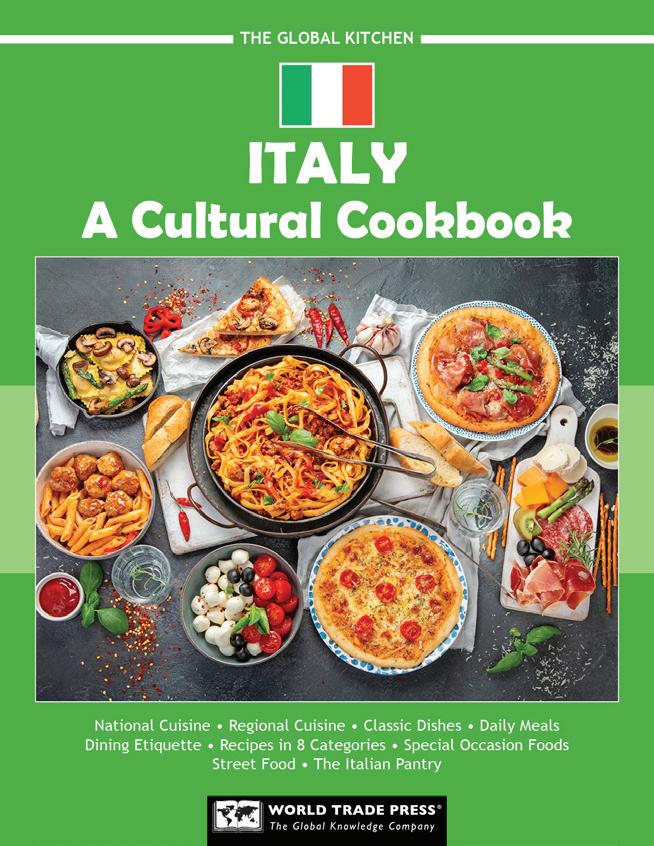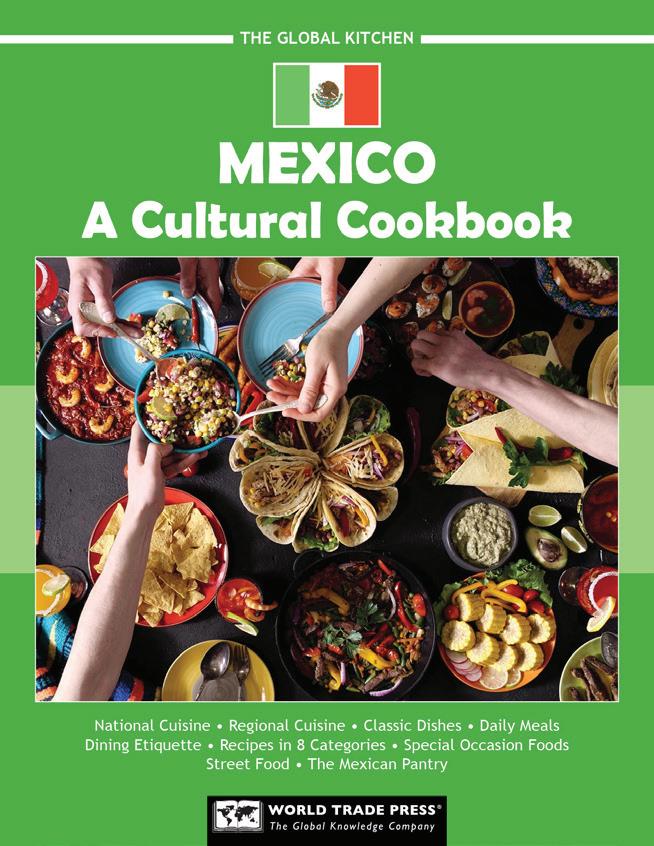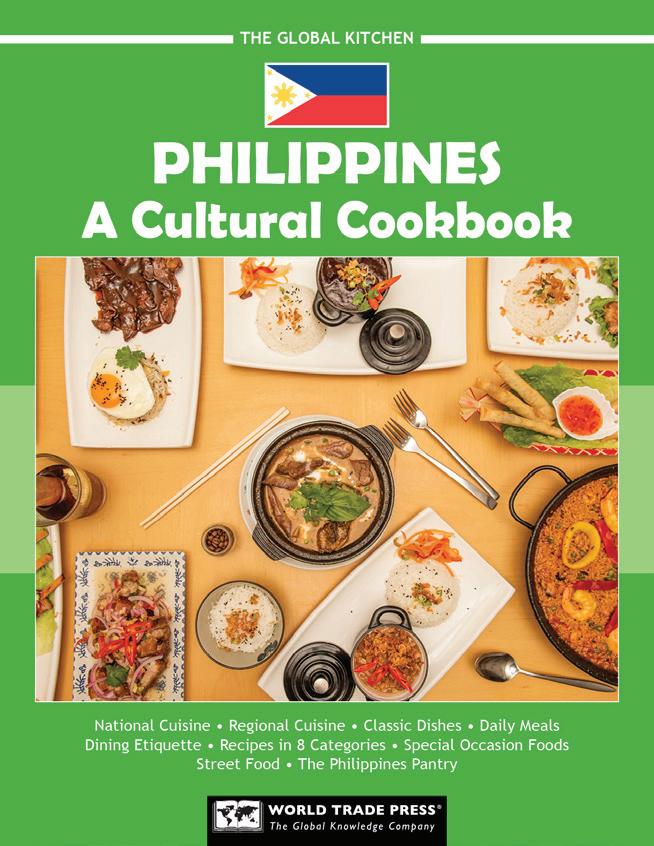
THE GLOBAL KITCHEN SERIES


THE GLOBAL KITCHEN SERIES
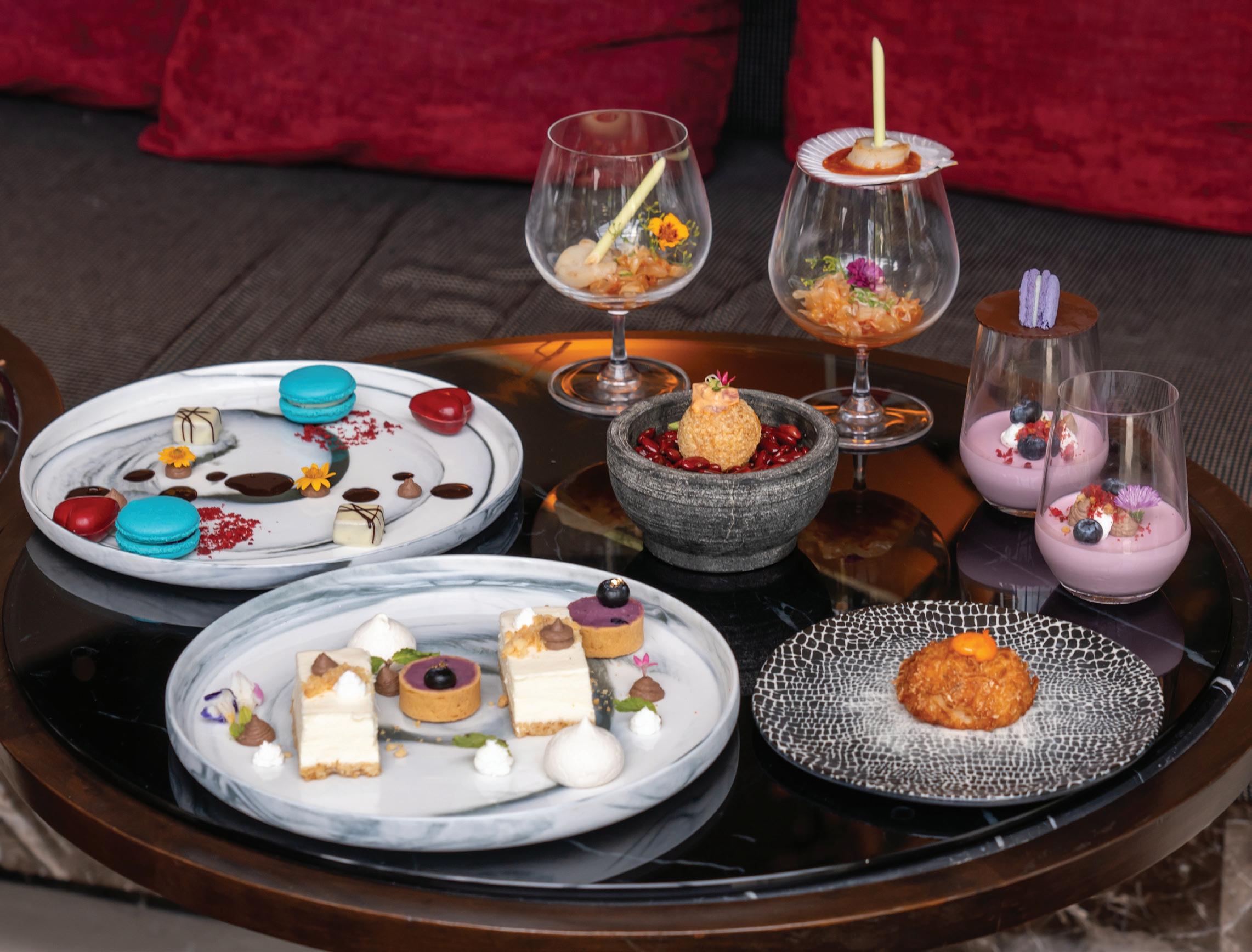
National Cuisine • Regional Cuisine • Classic Dishes • Daily Meals
National Cuisine • Regional Cuisine • Classic Dishes • Daily Meals
Dining Etiquette Recipes in 8 Categories • Special Occasion Foods
Dining Etiquette • Recipes in 8 Categories • Special Occasion Foods
Street Food • The German Pantry
Street Food • The British Pantry
Copyright © 2025 by World Trade Press
Publisher: Edward G. Hinkelman
Editors: Jenny Fretland VanVoorst, Brielle Burt, Felicia Topp
Designer: Journey Krajnik
Cover Image: JeniFoto/Shutterstock
No part of this publication may be reproduced, stored in a retrieval system, or transmitted in any form or by any means, electronic, mechanical, photocopying, recording, scanning, or otherwise, except as permitted under Section 107 or 108 of the 1976 United States Copyright Act, without either the prior written permission of the Publisher.
For information about permission to reproduce selections from this report, please contact Permissions: permissions@worldtradepress.com
For information about special discounts for bulk purchases, please contact Sales: sales@worldtradepress.com
ISBN: 978-1-60780-096-5
www.TheGlobalKitchen.com www.worldtradepress.com
World Trade Press, 616 E. Eighth St., Ste. 7, Traverse City, MI 49686


1. Angels on Horseback
2. Arran Potato Salad
3. Baked Beans6
4. Bangers and Mash with Onion Gravy
5. Bannock
6. Banoffee Pie
7. Bara Brith (Welsh Tea Bread)
8. Bath Buns
9. Beef Wellington
10. Beetroot and Goat Cheese Salad
11. Black Pudding
12. Bread and Butter Pudding
13. British-Style Coleslaw
14. Broad Bean and Bacon Soup
15. Brown Windsor Soup
16. Bubble and Squeak
17. Carrot and Cilantro Soup
18.
19. Cheese and Onion Pie
20. Christmas Roast
21.
22. Coburg Loaf
23. Cock-a-Leekie
24. Cornish Pasty
25. Coronation Chicken Salad
26. Cottage Loaf
27. Crumpets
28. Cucumber Sandwiches
29. Cullen Skink
30. Devilled Whitebait
31. Dorset Jugged Steak
32. Eggy Bread
33.
34. Fish and Chips
35. Glamorgan Sausages
36. Haggis
37. Heirloom Tomato Salad
38. Herring in Oatmeal
39. Hobnobs
40. Huffkins (Bread Rolls)
41. Irish Soda Bread
42. Kale and Stilton Salad
43. Lancashire Hotpot
44. Leek and Potato Soup
45. Lemon Curd
46. Liver and Onions
47. Mincemeat Pies
48. Mulligatawny
49. Oxtail Soup
50. Parsnip Soup
51. Pea and Ham Soup
52. Pickled Herring
53. Ploughman’s Lunch
54. Ploughman’s Loaf
55. Porridge
56. Prawn Cocktail Salad
57. Roasted Vegetable Salad
58. Root Vegetable Mash
59. Salmon Kedgeree
60. Scones
61. Scotch Broth
62. Scotch Eggs
63. Scottish Bannock
64. Shepherd’s Pie
65. Spotted Dick
66. Stargazy Pie
67. Steak and Kidney Pie
68. Stottie Cake
69. Sunday Roast Beef
70. Toad in the Hole
71.
72. Watercress Salad
73. Watercress Soup
74. Welsh Cakes
75. Welsh Cawl
76. Welsh Rarebit
77. Yorkshire Pudding

Welcome! This cookbook offers a comprehensive exploration of the culinary traditions of the United Kingdom, grounded in over 30 years of research and documentation. Compiled from our extensive reference database, cooks and professional chefs alike. What emerges is not just a collection of recipes, but a deeply informed portrait of a cuisine shaped by empire, industry, immigration, and regional heritage.
The food of the UK is often mischaracterized as austere or limited, yet its true identity is anything but. British
own history.
Structured with clarity and precision, this volume follows the format of our broader database. It favors factual richness over anecdote, making it a valuable resource for anyone seeking to understand the cultural, geographic, and historical foundations of British food. Each entry offers context as well as instruction, allowing -
Rather than offering a nostalgic or romanticized view, this cookbook presents British cuisine as it is: dynamic, resilient, and deeply tied to place. It is intended as a durable reference and a starting point for further explo-
British, as many of the representative dishes of the national cuisine come from England. English cuisine was The Forme of Cury (The Method of Cooking), a cookbook written by King Richard II’s cooks. While the title seems to anticipate the importance of Indian-style “curry” in modern British cuisine, this early cookbook displays a wide range of local ingredients, such as whale and game, as well as inrooted and with an international twist.
The Earl of Sandwich is credited with inventing the sandwich when he asked his servant to bring him his meat wedged between two slices of bread so he could continue playing his card game. Traditional English foods include cheeses such as Cheddar and Stilton, stews, ro asted meats and game, and savory pies. Dishes tend to
Yorkshire Pudding - From the north of England, with the traditional Sunday roast.
Cornish Pasties - From the region of Cornwall, potato, or turnips, and shaped into a characteristic semi-circular form with crimped edges. Easy to eat by hand, pasties became popular during the 19th century, when they were sold to blue-collar workers as a quick meal on the way to their shift at the factory.
Lancashire Hotpot - The northwest region of Lancashire industrialized quickly in the 19th century, and with both men and women spending long hours
be left at home to cook on low heat and would be ready for dinner later that night.
Jellied Eels - Boiled in a spiced stock, the eels are left to cool and set, resulting in a jelly that is served cold. The recipe comes from east London, of the Thames River for centuries.
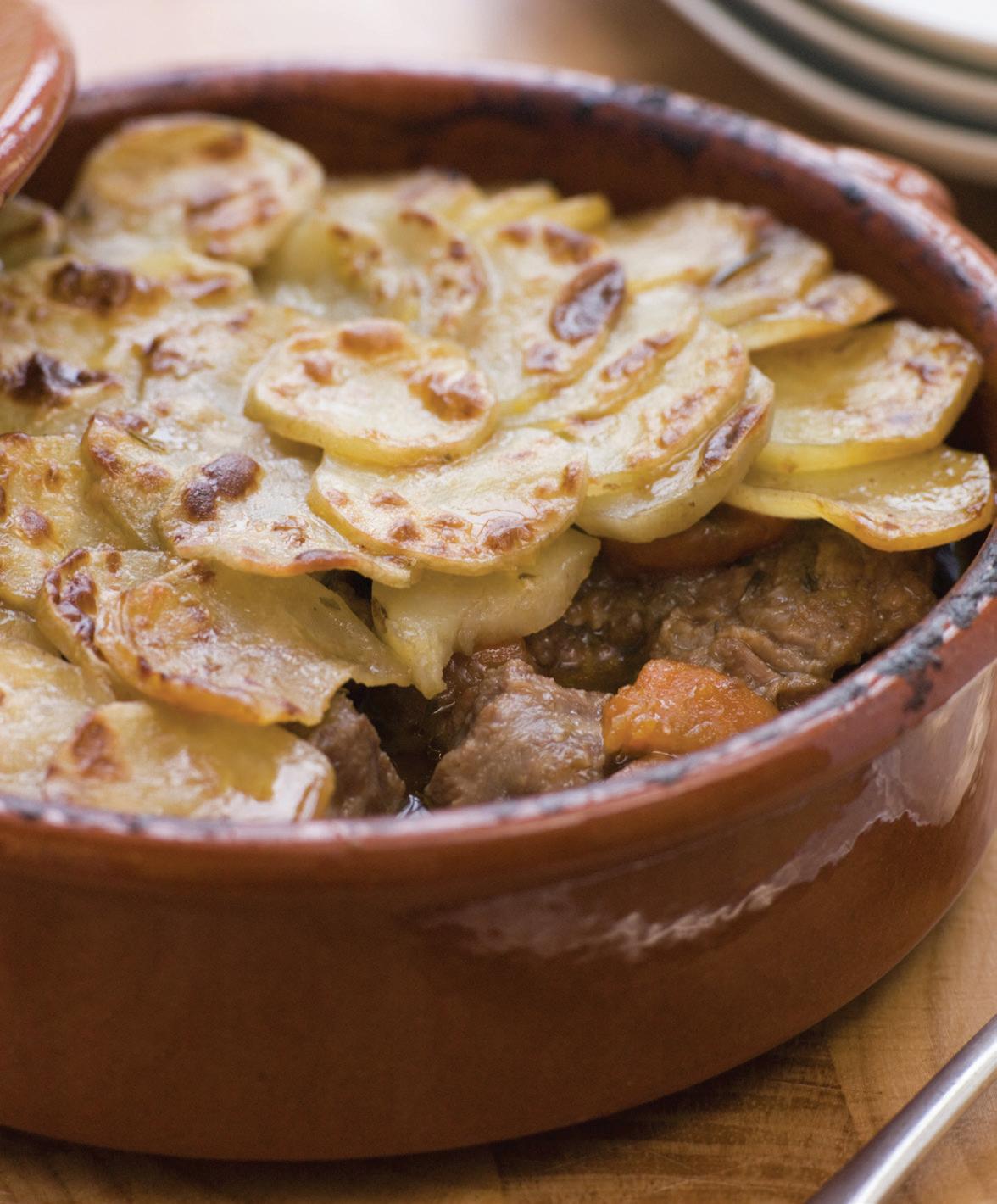
Stargazy Pie - Also from Cornwall, this baked savory pie features sardines in egg and potato, covered with a upwards toward the stars.
Dining etiquette in the United Kingdom can be quite formal, with multi-
about table settings and seating arrangements. Nearly all foods in the UK are eaten with utensils. Finger foods include pizza, sandwiches, and, in circumstances such as a barbecue, chicken. Only clear consommé is drunk directly from the bowl. All other soups are eaten with a spoon, the bowl tipped away and the spoon held sideways. The knife is held in the right hand and the fork in the left, and knives and forks are not switched while eating. Food is sometimes eaten scooped onto the back of the fork, especially potatoes and peas. The knife and fork are laid parallel on the right side of the plate after eating.


Bread or rolls eaten with meals are knife. Pieces of bread can be used to soak up sauce or gravy, or they can be buttered, but the entire roll shouldn’t be buttered at once. Instead, each bite is prepared directly before eating.
In formal place settings, the butter knife, dessert spoon, and dessert fork are placed above the plate, and other cutlery is placed on the sides, working in by order of courses. Forks will be placed on the left side of the plate, and knives and spoons will be placed on the right. A napkin is used to cover one’s lap while eating.
Burns Night, celebrated on January 25, honors the Scottish poet Robert Burns. The centerpiece of the meal is haggis, a savory pudding made from sheep’s offal, oatmeal, and spices. It is traditionally served with neeps and tatties (turnips and potatoes). Scottish whisky is the drink of choice, often used to toast
Scottish pride and cultural heritage, with food playing a key role in honoring tradition and the country’s national poet.

The Notting Hill Carnival, taking place annually in August, celebrates Caribbean culture in the UK, particularly in London. Street food plays a central role, with stalls offering traditional Caribbean dishes such as jerk chicken, curried goat, and plantains. Rice and peas as well as patties (savory pastriescelebration of diversity and community.
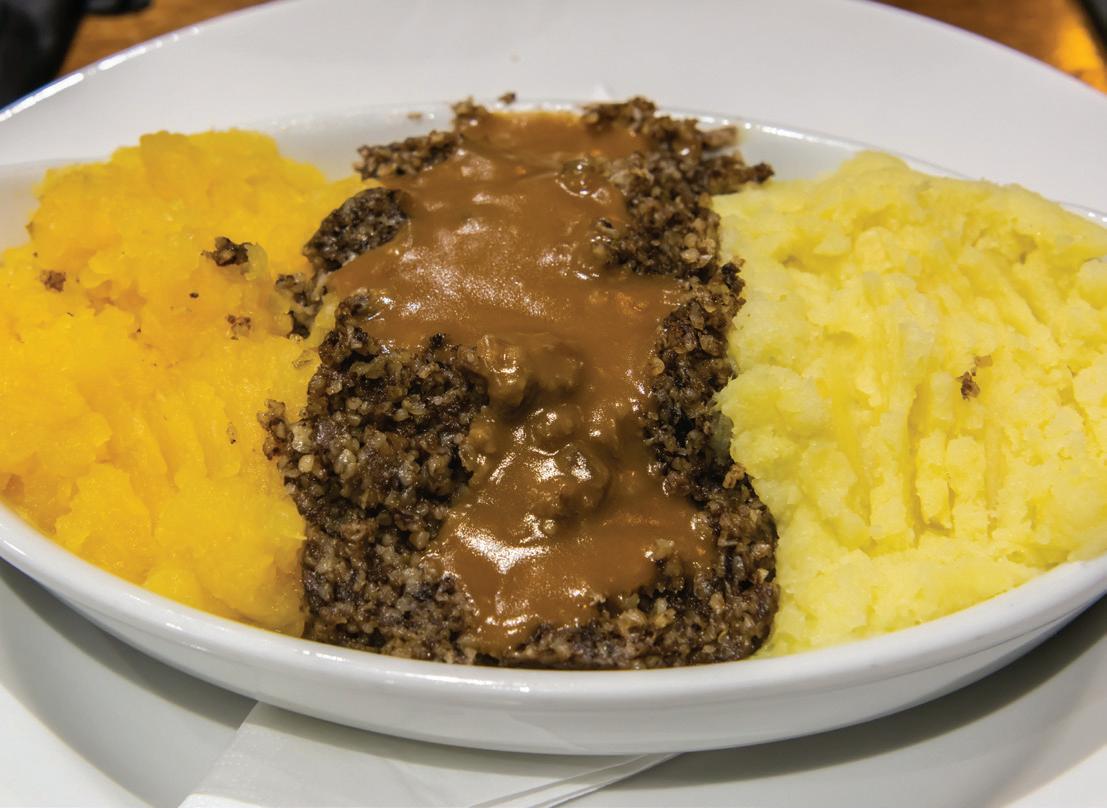
St. George’s Day, celebrated on April 23, honors the patron saint of England. Although it’s not widely observed, traditional English foods are often enjoyed on this day. A roast dinner featuring beef, lamb, or chicken with Yorkshire puddings, gravy, and vegetables is common. Afternoon teaes, scones, and cakes is another way to celebrate.
heritage, with meals that celebrate the country’s national identity and history.
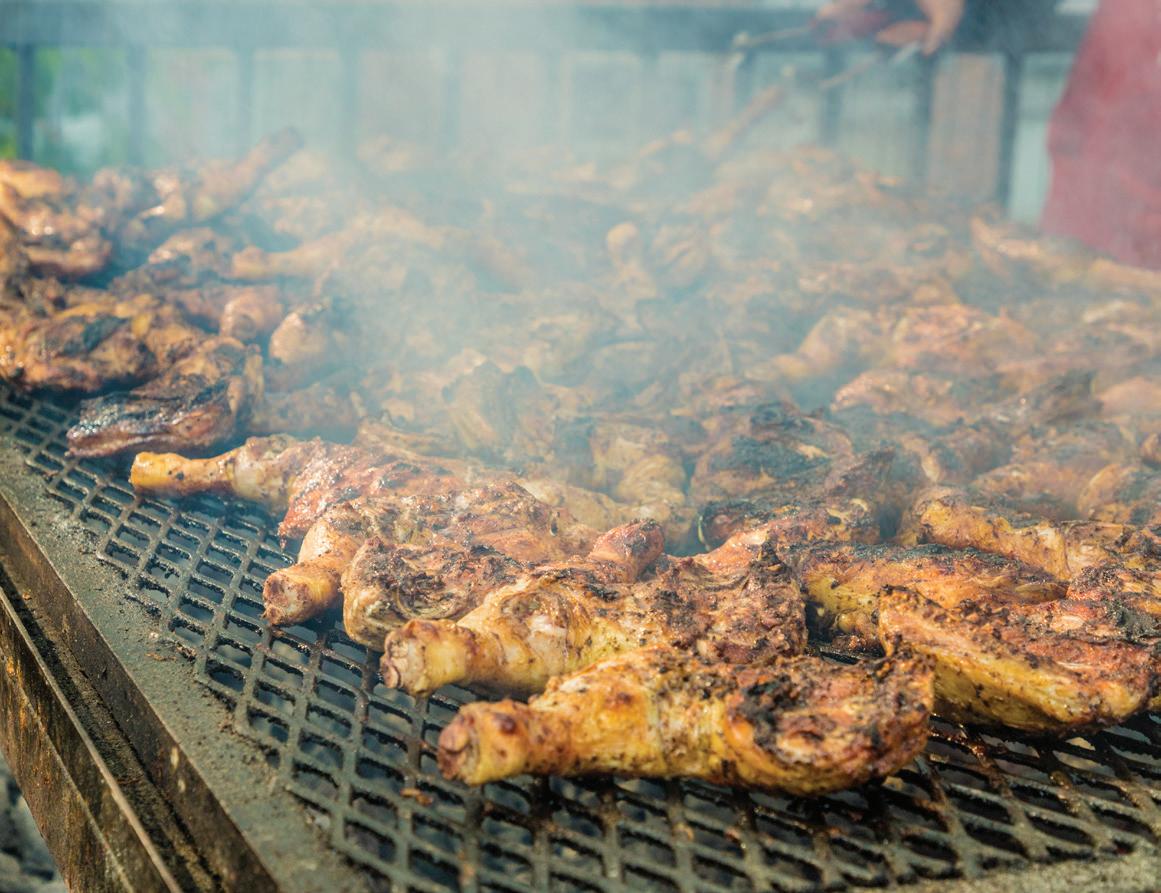
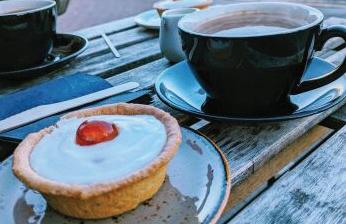
Developed in the 20th century as a variant of Bakewell pudding, the Bakewell tart consists of a shortcrust (almond cream) topped with a layer of white fondant icing and a candied cherry. Variations might include different types of jam. The Bakewell tart is a popular sweet treat in the UK, available at bakeries, cafés, and markets.
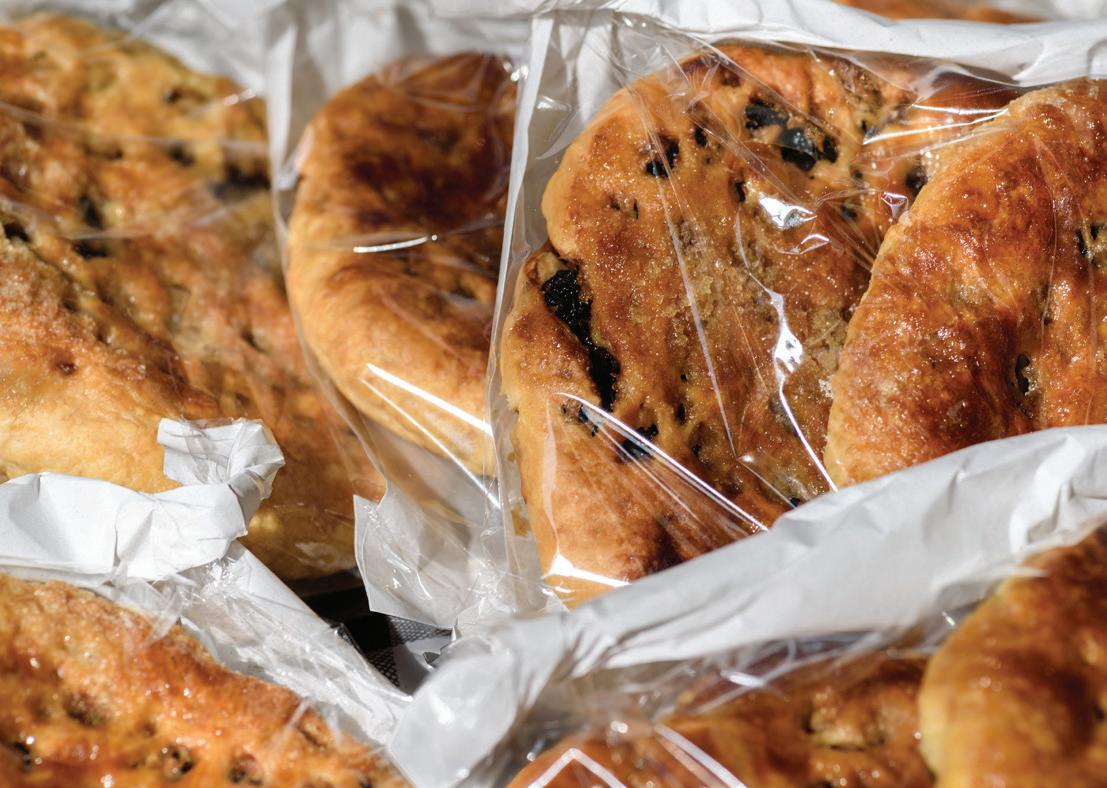
ations might include adding citrus zest or different dried fruits and dusting with brown sugar or powdered sugar. Eccles cakes are named after the town of Eccles in Greater Manchester and have been enjoyed in the UK since the 18th century. They are commonly sold at bakeries, cafes, and markets.

Treacle tart is a traditional British dessert made from syrup, breadcrumbs, and lemon juice, often served with cream or custard. Variations might include adding ground almonds or ginger. Treacle tart is a classic comfort food in the UK, particularly popular in the winter months, and is widely available at bakeries, cafés, and markets.
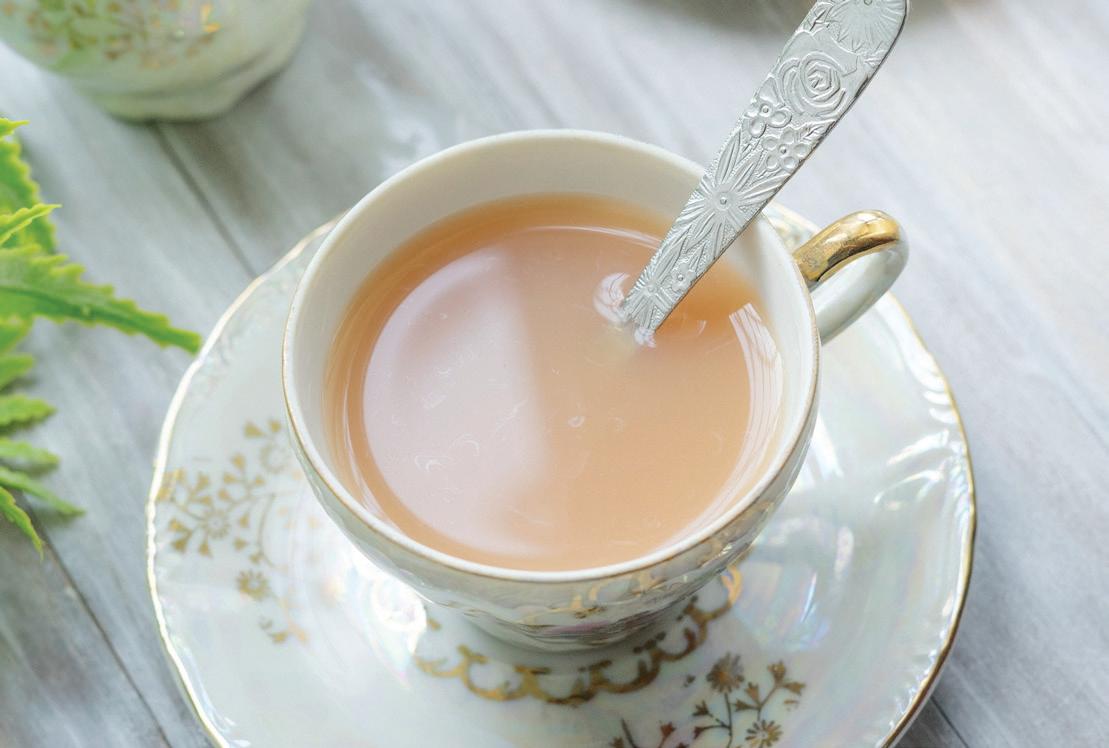
Tea is the quintessential British beverage, often served black or with milk and sugar, and enjoyed throughout the day. Variations might include different types of tea, such as Earl Grey, English Breakfast, or herbal teas. Tea has been a cornerstone of British culture since the 17th century and is commonly available at cafés, tea shops, and food markets across the country.
Coffee is consumed throughout the day in the breaks, and as part of afternoon relaxation. In homes, instant coffee or pod machines are widely used. In cafés, coffee is enjoyed socially or as part of work-from-café culture, often paired with pastries, sandwiches, or classic British treats such as scones or Victoria sponge cake. Coffee is common in meetings and social calls, especially in urban areas, while afternoon tea still reigns as the culturally iconic beverage occasion. Coffee, however, continues to grow as a casual, fast, and cosmopolitan counterpart.

•sumed daily.
• London is home to more than 3,000 independent coffeeshops, ranging from minimalist espresso bars to experimental brew labs.
• menu item.
• accounts for a major share of domestic consumption.
• British coffeehouses of the 17th century played a pivotal role in the development of journalism, stock trading, and public discourse.
• UK cafés increasingly emphasize sustainability, with many offering oat milk alternatives, reusable cup discounts, and direct trade beans.
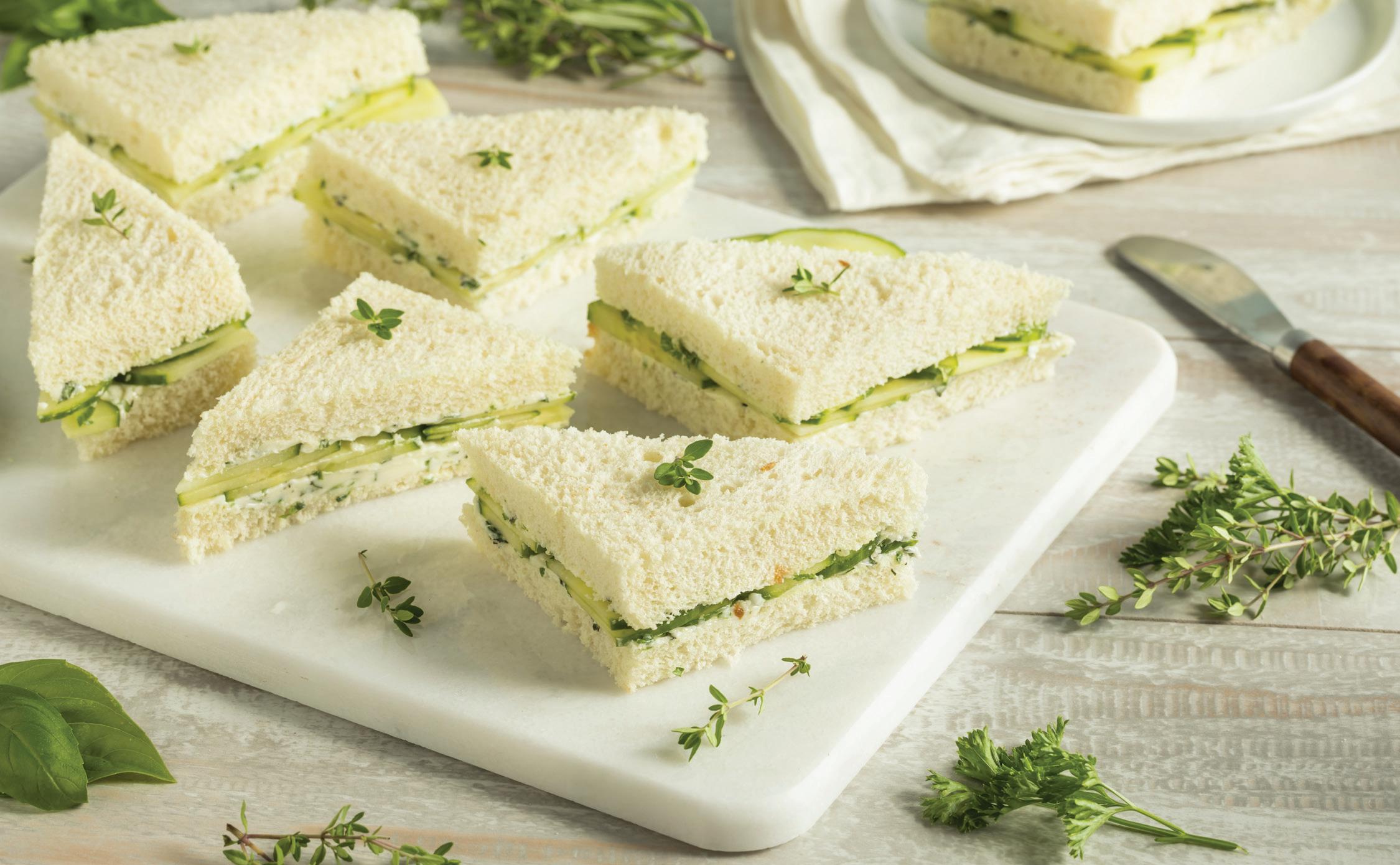
Prep Time: 15 minutes Cook Time: 10 minutes Total Time: 25 minutes
Recipe Servings: 32
Dietary Considerations: Vegetarian, Kosher, Halal
These famous cucumber tea sandwiches must be made with buttered soft white bread with the crusts cut off. Other tea sandwiches are made from watercress, boiled chicken, or roast beef. All use butter rather than mayonnaise.
Directions
Ingredients
1 seedless cucumber
4 oz (113 g) unsalted butter, softened bread, crusts removed
Fresh herbs such as mint, parsley, or watercress, as needed for garnish
1. Peel cucumber, cut in half lengthways, and slice crossways as thinly as possible.
2. Spread each slice of white bread with about 1½ teaspoons (7.5 ml) of the softened butter.
3. Arrange several slices of cucumber on each of eight slices of bread.
4. Top each sandwich with another slice of bread.
5. Cut each sandwich into four triangles.
6. Arrange sandwiches on a platter and garnish.
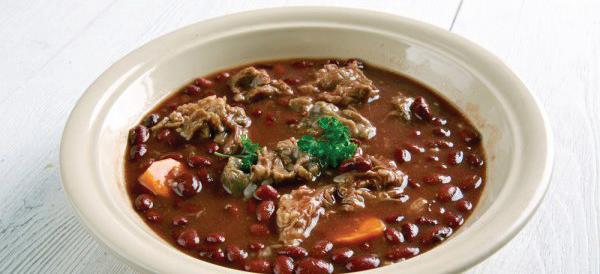
Prep Time: 5 minutes Cook Time: 2 hours 30 minutes Total Time: 2 hours 35 minutes
Recipe Servings: 4 Dietary Considerations: Halal
Said to have been particularly popular during the Victorian and Edwardian eras, brown Windsor soup is much written about, often satirically. While this soup acquired a bad reputation when it was served as a boarding
Ingredients
1 oz (28 g) butter
1 leek, green only, chopped
1 small carrot, diced
12 oz (340 g) stewing steak, cubed
6 cups (1.4 L) beef stock
1 bouquet garni (tied bundle of 3 sprigs of parsley, 2 sprigs rosemary, and 1 bay leaf)
1 Tbsp (15 ml) chopped parsley
Directions
1. Melt butter in a large pan and cook onion for 1–2 minutes.
2. Add leek and carrot and cover, cooking for 5 minutes.
3. Add beef and stir until browned.
4.
5. Add mixture and remaining stock to pan and bring everything to a boil.
6. Add bouquet garni, cover, and simmer gently for 2 hours.
7. Remove bouquet garni and purée a portion of soup.
8. Garnish with parsley and serve.
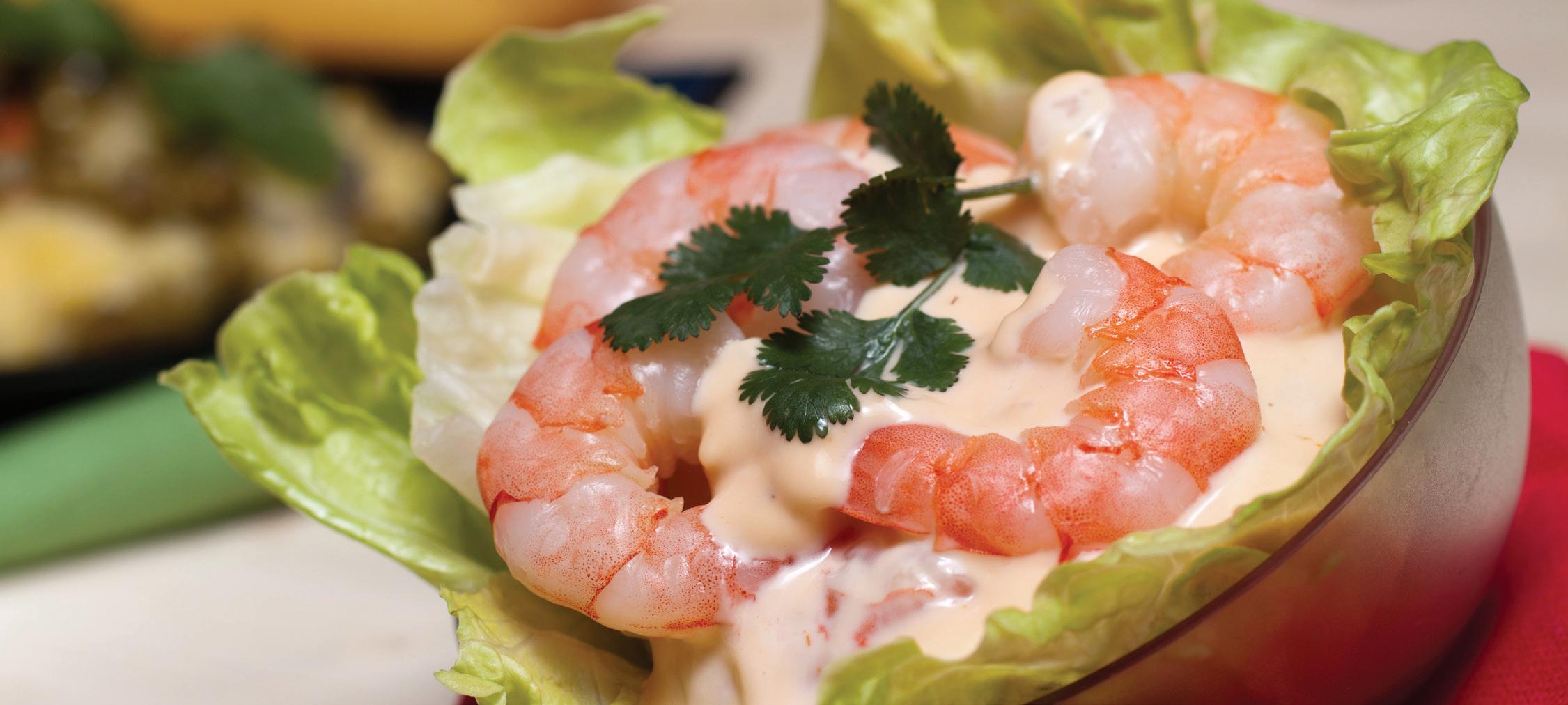
Prep Time: 10 minutes Cook Time: 0 minutes Total Time: 10 minutes
Recipe Servings: 4 Dietary Considerations: Gluten Free, Halal
Prawn cocktail salad, a classic British dish, features prawns dressed in a tangy Marie Rose sauce, typically made from mayonnaise, ketchup, Worcestershire sauce, and lemon juice. Popularized in the mid-20th century, for festive occasions. Its origins are linked to the rise of shrimp cocktails in America, but the British versionbodies the elegance and indulgence of post-war dining culture. Though its popularity waned with changing food trends, prawn cocktail remains a nostalgic symbol of British culinary tradition.
Ingredients
2 Tbsp (30 ml) mayonnaise
1 Tbsp (15 ml) ketchup
1 tsp (5 ml) Worcestershire sauce
Juice of ½ lemon
5 oz (150 g) prawns, cooked and peeled
1 small head of lettuce, shredded
Paprika, for garnish
1. Mix the mayonnaise, ketchup, Worcestershire sauce, and lemon juice in a bowl to make Marie Rose sauce.
2. Toss the prawns in the sauce until coated.
3. Arrange the lettuce on a plate or bowl, top with the prawns, and sprinkle with paprika.
• Marie Rose sauce is a classic English cocktail sauce for prawn or shrimp cocktail. A simpler version can be made by mixing tomato ketchup with mayonnaise.
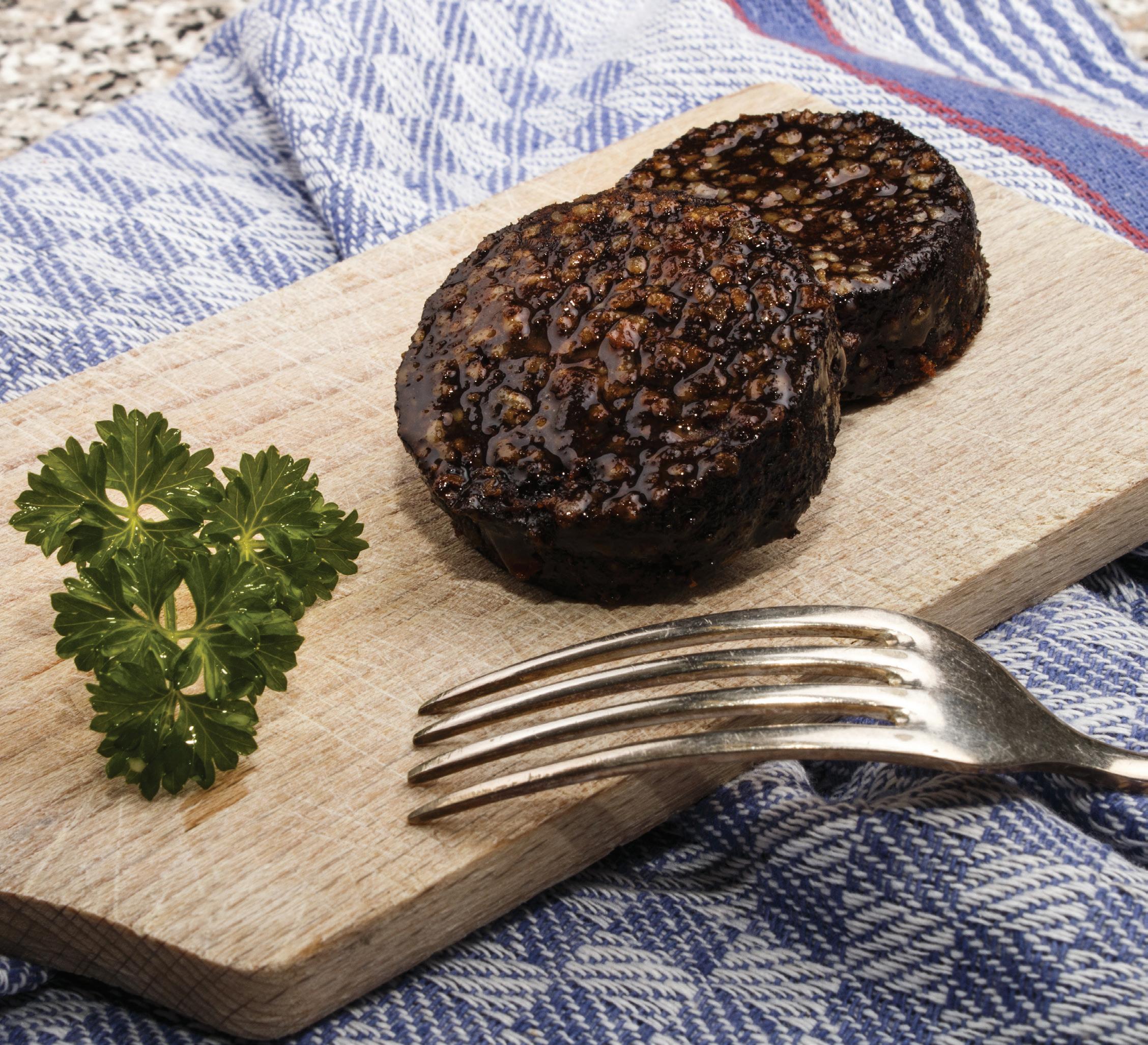
Prep Time: 30 minutes
Cook Time: 1 hour
Recipe Servings: 24
Total Time: 1 hour 30 minutes
Dietary Considerations: None
Black pudding, also called blood sausage, has been made for centuries as a nutritious way to use more of a butchered animal. After falling out of favor in the 20th century, today black pudding has been making a revival as a traditional part of a full English breakfast. It may also be crumbled into mashed potatoes or served as a savory addition to a fry-up or hash.
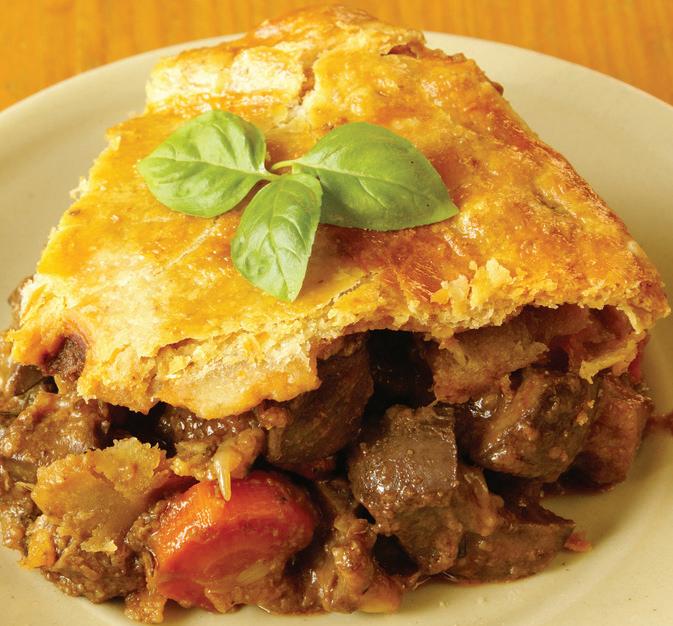
Prep Time: 2 hours
Cook Time: 40 minutes
Recipe Servings: 4-6
Total Time: 2 hours 40 minutes
Dietary Considerations: Halal
beef, kidneys, onions, and gravy, steak and kidney pie is a staple of the traditional English home, as well as a popular pub dish. Warm and nourishing, it’s the epitome of comfort food.
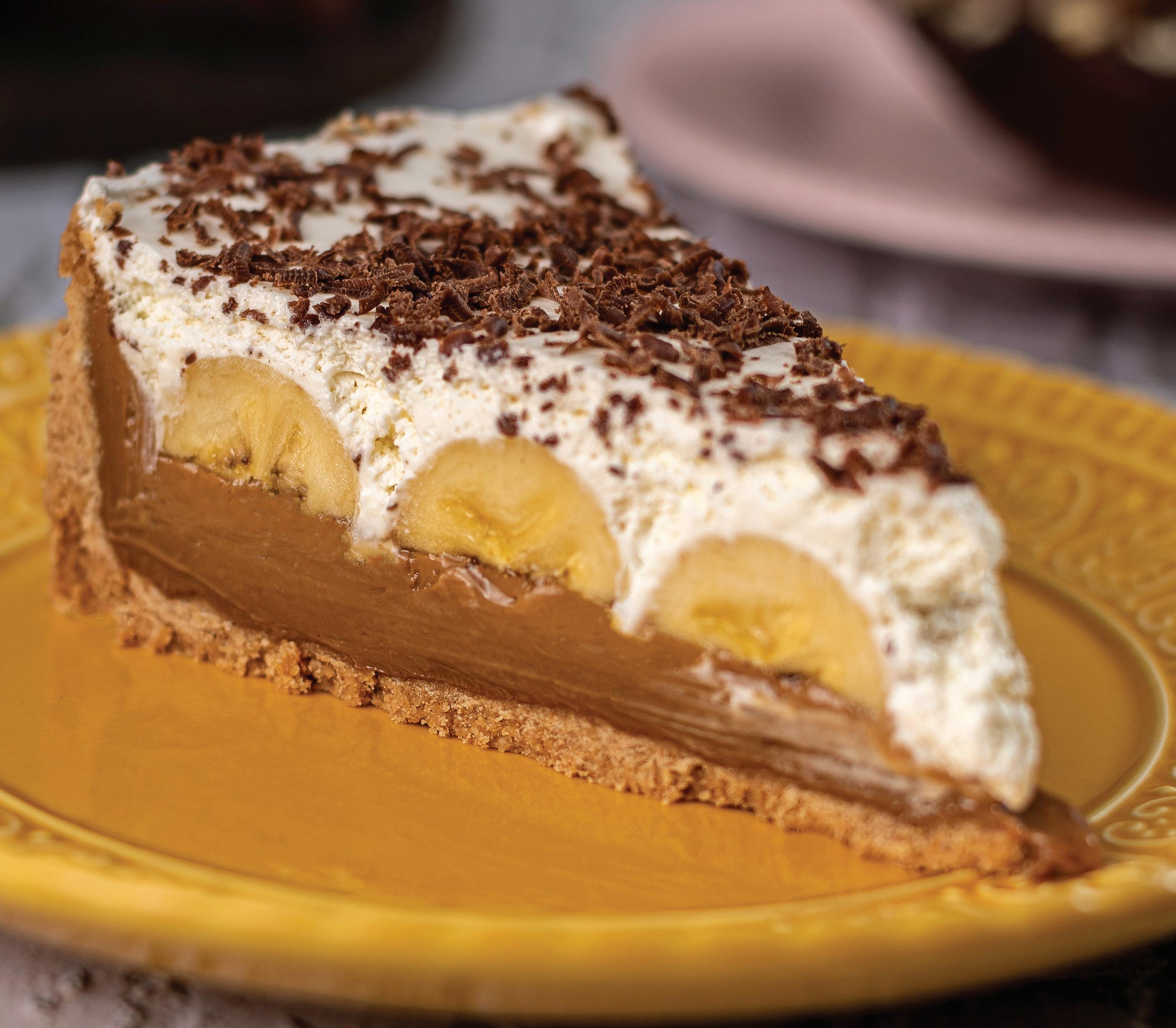
Prep Time: 30 minutes Rest Time: 2 hours Cook Time: 20 minutes Total Time: 2 hours 50 minutes
Recipe Servings: 8 Dietary Considerations: Vegetarian, Gluten Free, Kosher, Halal
crust. Banoffee pie is served as dessert or as an accompaniment to tea or coffee.
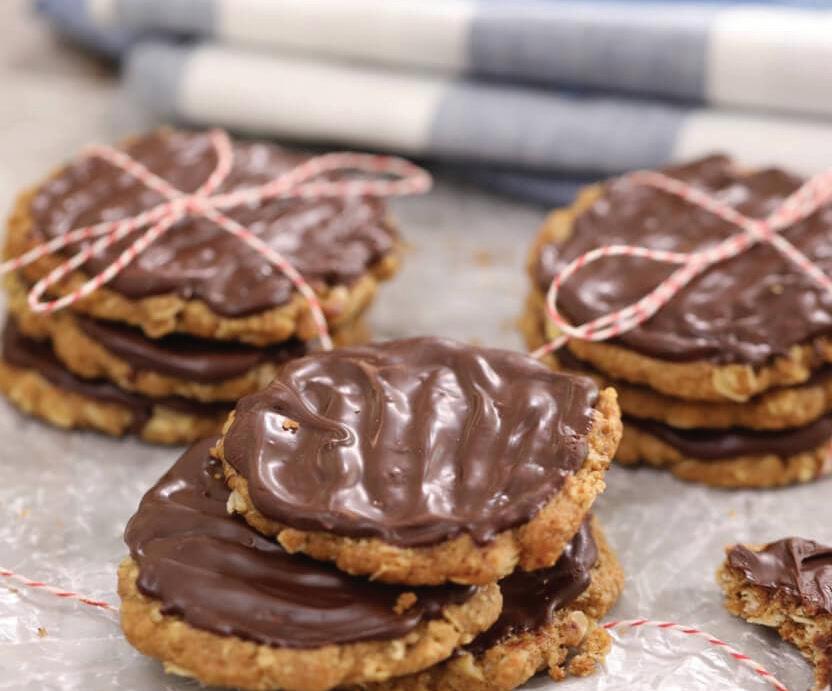
Prep Time: 5 minutes
Cook Time: 45 minutes
Total Time: 55 minutes
Recipe Servings: 20 Dietary Considerations: Vegetarian
troduced by McVitie’s in the 1980s, these biscuits have become a staple in British teatime traditions. Made available in classic varieties or with a chocolate coating, adding a layer of sweetness that pairs perfectly with the biscuit’s wholesome base. Their sturdy texture makes them ideal for dunking into a cup of tea without and satisfying balance of crunch and chew, embodying the UK’s love for hearty and comforting treats.
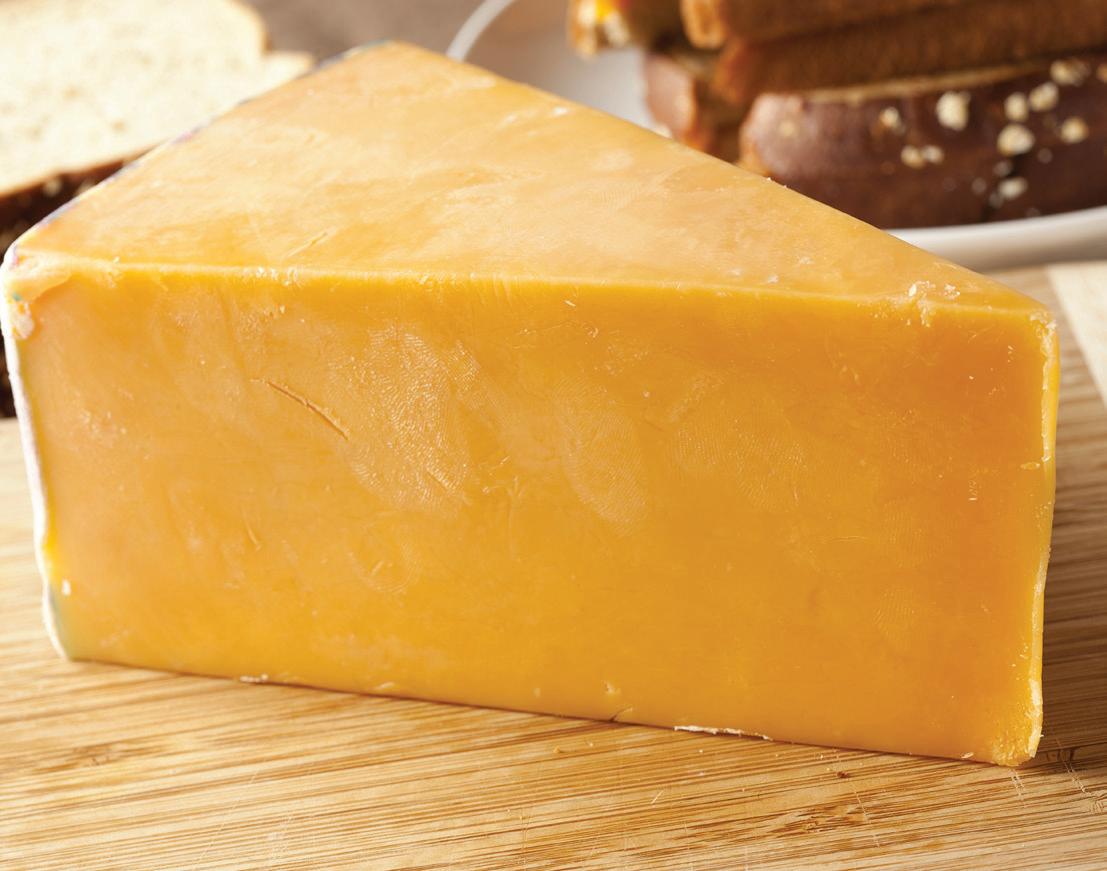
Cheddar is a hard cheese made from cow’s milk. It is white, yellow, or orange, depending on added colorings, and may range in texture from rubbery and springy to dry and crumbly.
Origin
Cheddar originated in the village of Cheddar, England, in the 12th century, from a recipe that may have been brought to Britain from France by the Romans.
Varieties of cheddar include white, smoked, mild, and sharp. White, or Vermont, cheddar keeps its natural white or pale yellow color. The age of the cheese determines whether it is mild, sharp, or extra sharp. The longer the cheese is aged, the sharper it becomes. Mild cheddar has a softer, creamier texture, while an aged cheese becomes hard and crumbly.
Cheddar is often paired with grapes, apples, and other sweet fruit, as well as with bread and wine. It is a popular sandwich cheese and a good melting cheese that is used in toasted sandwiches such as grilled cheese and in baked dishes and pastas. It is the principal cheese in macaroni and cheese, and is often used in melted cheese dips, nacho cheese, and some fondue. In fondue, a sharp variety is preferred. Cheddar also pairs well with beer. In the United States, cheddar may even be used as a topping for hot apple pie.
Cheddar is available year-round.
• Orange-colored cheddar is not naturally orange but made that way by the addition of a dye from the annatto tree.
cheddar is more intense, with a more pronounced character, a sharp bite, and a hint of nuttiness.
Cheddar is an excellent source of protein, fat, calcium, phosphorus, and vitamin A. It is a good source of contains magnesium and vitamin D.

World Trade Press is a publishing and information products company specializing in country-based information company’s mission is to strengthen mutual understanding across cultures by lowering the information barriers that prevent individuals and organizations from succeeding in the international arena. World Trade Press clients include academic and public libraries, universities, global businesses, government agencies, global logis-
World Trade Press has developed and maintains more than a dozen large-scale online databases of country and city information covering business, culture, food, import/export, local living, and travel for 174 world countries and 201 world cities.
World Trade Press has published multiple editions of more than 100 physical reference books, country business guides, books for international trade and logistics, world atlases for travel and logistics, and world and country wall maps.
World Trade Press has developed and maintains more than two dozen professional-level country e-reports and e-books for each of 174 countries. These products cover topics such as business culture, cost of living, demographics, education, environment, holidays and festivals, government, money and banking, music, quality of life, religion, security, social indicators, and more.
and cartographers and more than 100 external subject-matter experts to create world-class content in theel. To view a partial list of contributors to titles in The Global Kitchen series, go to www.TheGlobalKitchen. com/contributors.html.
Learn more about World Trade Press and its products at www.WorldTradePress.com.
Check
